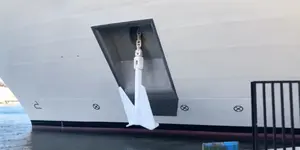Since the 2010s, Japan has faced the growing challenge of responding to China’s maritime expansion and military growth, particularly concerning the defense of its remote islands in the East China Sea, known as the Nansei Islands. To bolster its defense capabilities, Japan established the Amphibious Rapid Deployment Brigade (ARDB) in March 2018. This brigade, a specialized segment of the Japan Ground Self-Defense Force (JGSDF), comprises around 3,000 personnel and is uniquely equipped for amphibious operations that Japan had lacking until this point.
The formation of the ARDB was spurred by the necessity of defending against potential invasions of Japan’s distant islands. A well-executed amphibious assault is central to recapturing these territories if they fall into enemy hands. The brigade is structured into three core regiments, all of which utilize AAV-7 amphibious assault vehicles, which include personnel carrier, command, and recovery variants. These vehicles play a crucial role during shore assaults, launched from Japan Maritime Self-Defense Force (JMSDF) Ōsumi-class landing ship tanks.
Based at Ainoura Garrison near Sasebo Naval Base in Nagasaki Prefecture, the brigade’s strategic location enhances its capacity for swift deployment during emergencies. The ARDB’s AAV-7s primarily serve the Combat Landing Battalion, which consists of three Combat Landing Companies. An exclusive interview was conducted with the battalion’s commander, Lieutenant Colonel Seiichirō Satō, providing insights into the operational characteristics and challenges of the AAV-7.
Lt. Col. Satō highlighted the significant adjustment required for JGSDF personnel transitioning from operating tanks to the AAV-7. Unlike traditional armored vehicles designed solely for combat, the AAV-7 balances combat capabilities with the ability to transport troops and conduct obstacle-clearing operations on beaches, thus adding a critical transport capacity.
Training for these amphibious operations poses unique challenges. Japan lacks a single training site that encompasses all aspects of amphibious assaults, necessitating separate training exercises for maritime movements, shore landings, and inland combat operations. This separation complicates the maintenance of troop proficiency.
Looking toward the future, Lt. Col. Satō underscored the need for a next-generation amphibious armored vehicle to replace the AAV-7, currently under development by Mitsubishi Heavy Industries (MHI). Key improvements anticipated include enhanced firepower—crucial against lightly armored enemies—as the existing AAV-7 only carries limited firepower options. Moreover, stability and maritime speed are primary concerns; the current AAV-7 is prone to severe pitching and rolling at sea, contributing to motion sickness, and exhibits slow waterborne speeds that impede rapid landings.
The ARDB is also expanding its operational base capabilities, evidenced by ongoing construction of a new pier adjacent to Sakibe Vice-Camp. This improvement will allow for direct loading of AAV-7s onto JMSDF transport ships, significantly boosting the brigade’s readiness and responsiveness for any potential maritime conflicts.
Overall, the development and strategies surrounding the ARDB signify Japan’s commitment to enhancing its amphibious readiness amidst regional security challenges.
Source link




